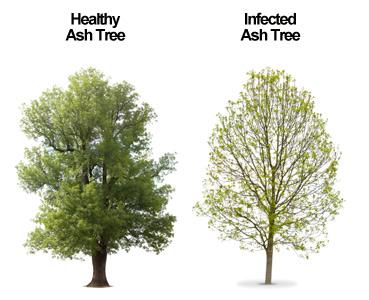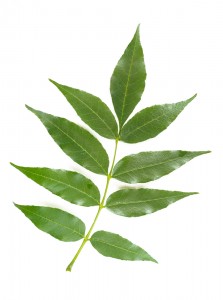Emerald Ash Borer a Serious Threat
Emerald Ash Borer (EAB), a small green beetle native to Asia and Russia, “is now considered the most destructive forest pest ever seen in North America,” according to the website www.emeraldashborer.info. The presence of the Emerald Ash Borer has been confirmed in our local area. Whitehouse Landscaping’s Tree and Shrub Care program provides everything your trees and shrubs need to remain healthy.
American Ash trees are beautiful shade trees. It’s fairly easy to identify an ash tree because of its very distinctive characteristics. It’s leaves are compound, meaning 7-9 leaflets are arranged in a single leaf. These leaves are also distinctive in how they grow on a branch. Most trees have their branches arranged alternately on a branch, but an Ash tree will grow leaves opposite from one another.

healthy and infected Ash tree
Symptoms and Signs of Infestation
The first signs of EAB include increased numbers of woodpeckers looking for the larvae, many new branches sprouting from the trunk as the tree tries to make up for damaged branches, and tine holes in the bark the size of a pencil tip in the shape of a “d”. More obvious signs are splits running up and down the tree bark, dying branches and loss of leaves.
A Proactive Approach is Most Effective
If you have a high value Ash tree on your property, you’ll want to protect its health and consider a proactive approach. Ash trees can be injected with an insecticide through drilled holes. Injection involves less chemical spread to the surrounding environment. Treatment should be repeated every two years.
Ideally, trees should be treated before infestation. However, if a tree has lost less than 30% of its leaves and branches, it still has a good chance of being saved.

